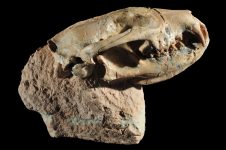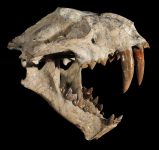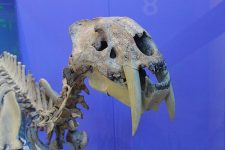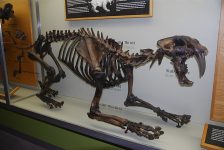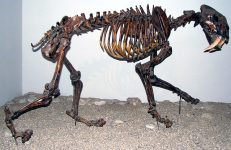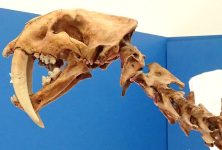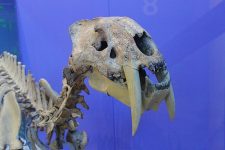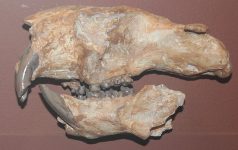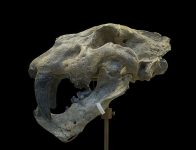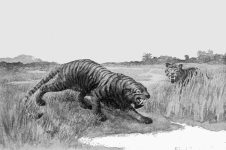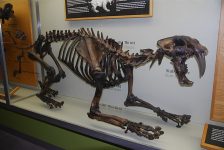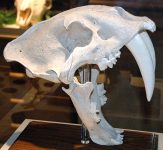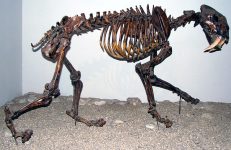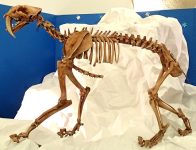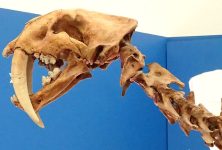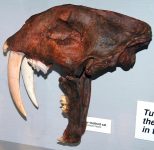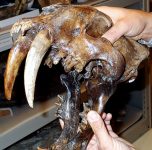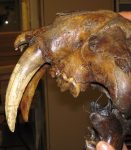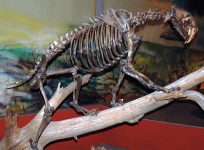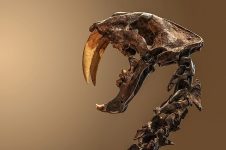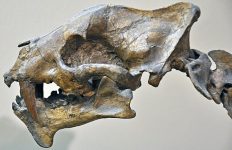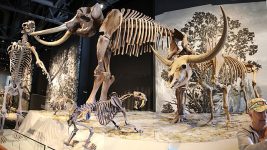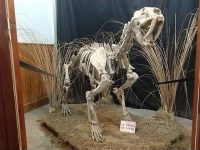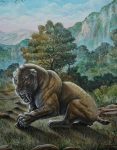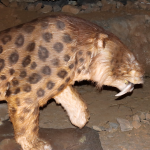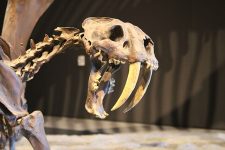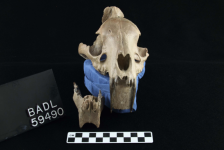SABER CAT
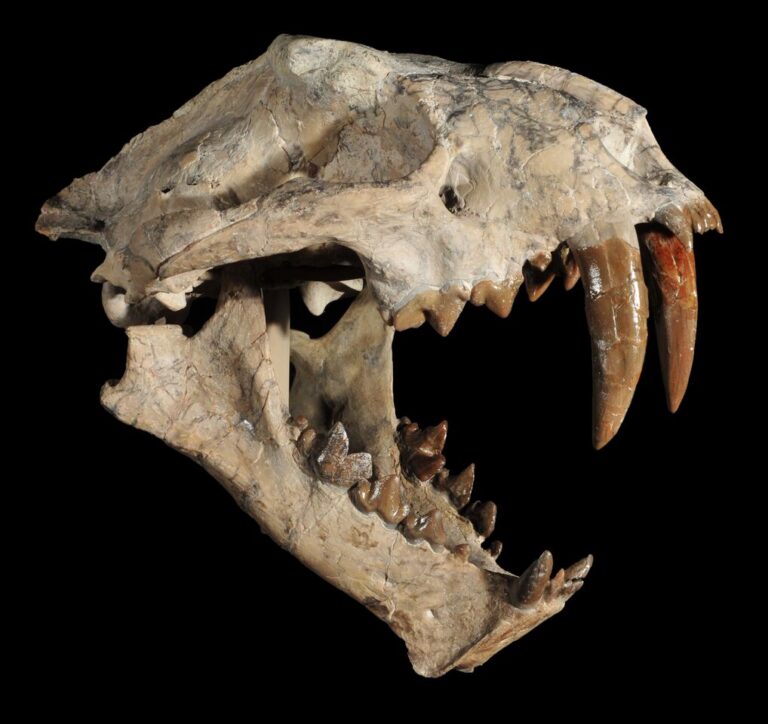
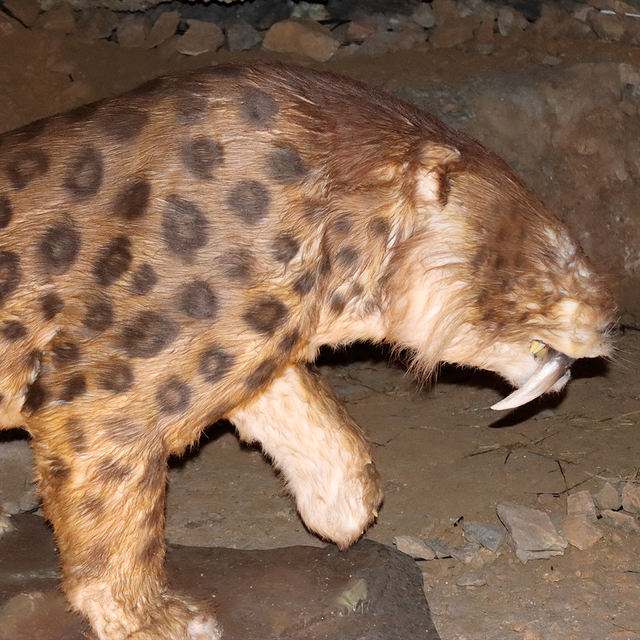
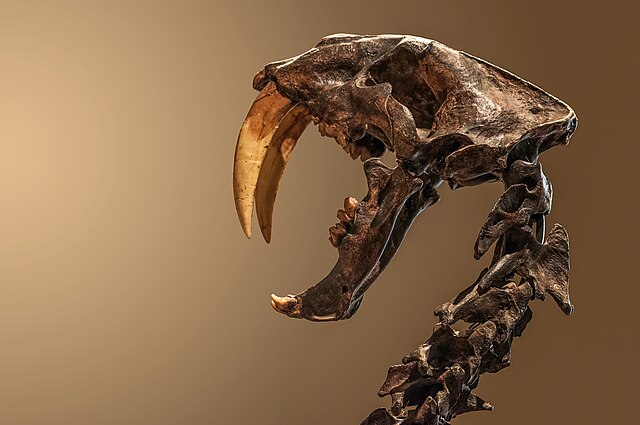
SABER CAT
Saber-toothed cats, scientifically known as machairodonts, were a diverse group of large carnivorous mammals characterized by their distinctive elongated canine teeth. These cats roamed various continents during the Pleistocene epoch, from approximately 2.5 million to 10,000 years ago. Known for their formidable hunting abilities and adaptations, saber-toothed cats played significant roles as apex predators in ancient ecosystems. In this exploration, we delve into their anatomy, evolution, diversity, habitats, extinction, and scientific significance.
Anatomy and Physical Characteristics
Saber-toothed cats exhibited several key anatomical features that distinguished them from modern-day felines:
Saber Teeth: Their most iconic feature was their long, curved canine teeth (sabers), which could reach lengths of up to 11 inches (28 centimeters) in some species. These teeth were adapted for delivering powerful, precise bites to immobilize and kill prey effectively.
Body Size and Build: Saber-toothed cats varied in size from smaller, agile species to larger, robust forms. They typically had muscular bodies, strong limbs, and a robust skull structure that supported the powerful jaw muscles needed for biting and tearing flesh.
Habitat Adaptations: Saber-toothed cats were well-adapted to a range of environments, from open grasslands and savannas to forested regions and mountainous terrain. Their hunting strategies and prey preferences often correlated with their specific habitat adaptations and ecological niches.
Evolutionary History
Saber-toothed cats evolved from earlier felid ancestors during the Miocene epoch, approximately 20 million years ago. They underwent significant diversification and adaptive radiation throughout the Miocene and Pliocene epochs, culminating in various genera and species adapted to different environments and hunting strategies. The peak of saber-toothed cat diversity occurred during the Pleistocene epoch, coinciding with the spread of large herbivorous mammals (megafauna) across continents.
Diversity and Classification
The saber-toothed cat family (Machairodontinae) encompassed several genera and species, each with unique adaptations and ecological roles:
Smilodon: Perhaps the most famous genus of saber-toothed cats, Smilodon species, such as Smilodon fatalis, were characterized by their robust build, powerful forelimbs, and large sabers. They inhabited North and South America and were specialized predators of large herbivores like bison and ground sloths.
Homotherium: Also known as the scimitar-toothed cat, Homotherium had shorter, more flattened sabers and was adapted for chasing down prey over longer distances. They were distributed across North America, Europe, Africa, and Asia.
Megantereon: Known for its more gracile build and shorter sabers, Megantereon was adapted for agility and likely hunted a variety of smaller to medium-sized prey. It inhabited regions of Europe, Africa, Asia, and North America.
Habitat and Hunting Behavior
Saber-toothed cats occupied diverse habitats and employed various hunting strategies tailored to their prey and environment. Their saber teeth were used not only for killing but also for delivering precise bites to critical areas of prey, such as the throat or neck, to incapacitate them quickly. Some species, like Smilodon, may have hunted cooperatively in packs to bring down larger prey, while others, like Homotherium, were more solitary hunters.
Extinction
The extinction of saber-toothed cats occurred during the late Pleistocene epoch, approximately 10,000 years ago, coinciding with significant environmental changes and the decline of large herbivorous mammals (megafauna). Several factors likely contributed to their extinction:
Climate Change: Shifts in global climate during the late Pleistocene, including warming temperatures and changes in vegetation patterns, may have altered prey distribution and reduced suitable habitats for saber-toothed cats and their prey.
Human Impact: The spread of early human populations into new territories during the late Pleistocene resulted in hunting pressures, habitat destruction, and competition for resources. Human hunting activities likely contributed to the decline of large herbivores, upon which saber-toothed cats depended for food.
Ecological Dynamics: The loss of megafaunal prey and the emergence of new predators and competitors may have disrupted ancient food webs and ecological interactions, placing additional stress on saber-toothed cat populations.
Scientific and Cultural Significance
Saber-toothed cats hold significant scientific importance as key indicators of ancient predator-prey dynamics, megafaunal extinctions, and evolutionary adaptations in carnivorous mammals. Fossilized remains of saber-toothed cats provide valuable insights into their anatomy, behavior, and ecological roles in Pleistocene ecosystems. These iconic predators have also captured the imagination of human cultures worldwide, appearing in ancient artworks, folklore, and modern popular culture as symbols of strength, agility, and primal hunting prowess.
Conservation and Preservation
Efforts to protect and preserve fossilized remains of saber-toothed cats and associated archaeological sites are essential for maintaining their scientific and educational value. National parks, museums, and research institutions play crucial roles in safeguarding saber-toothed cat specimens, promoting public education, and supporting ongoing research into Earth’s ancient biodiversity and evolutionary history.
